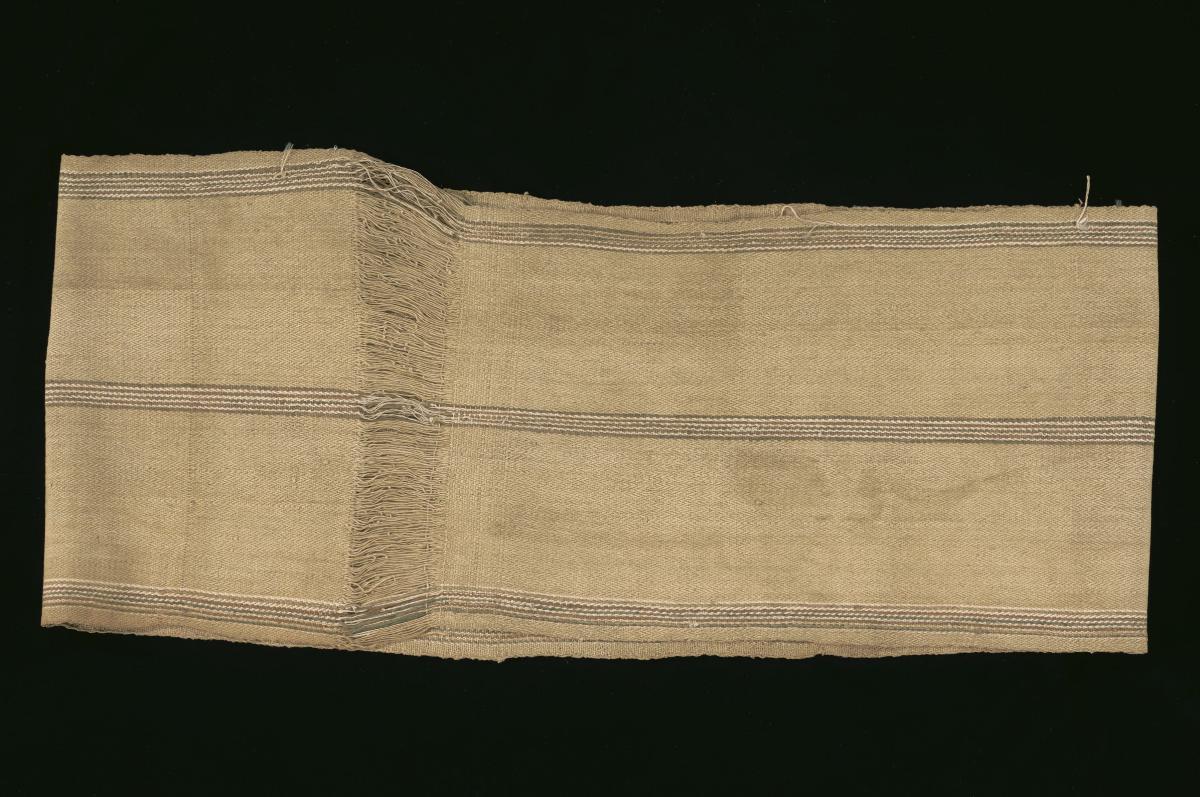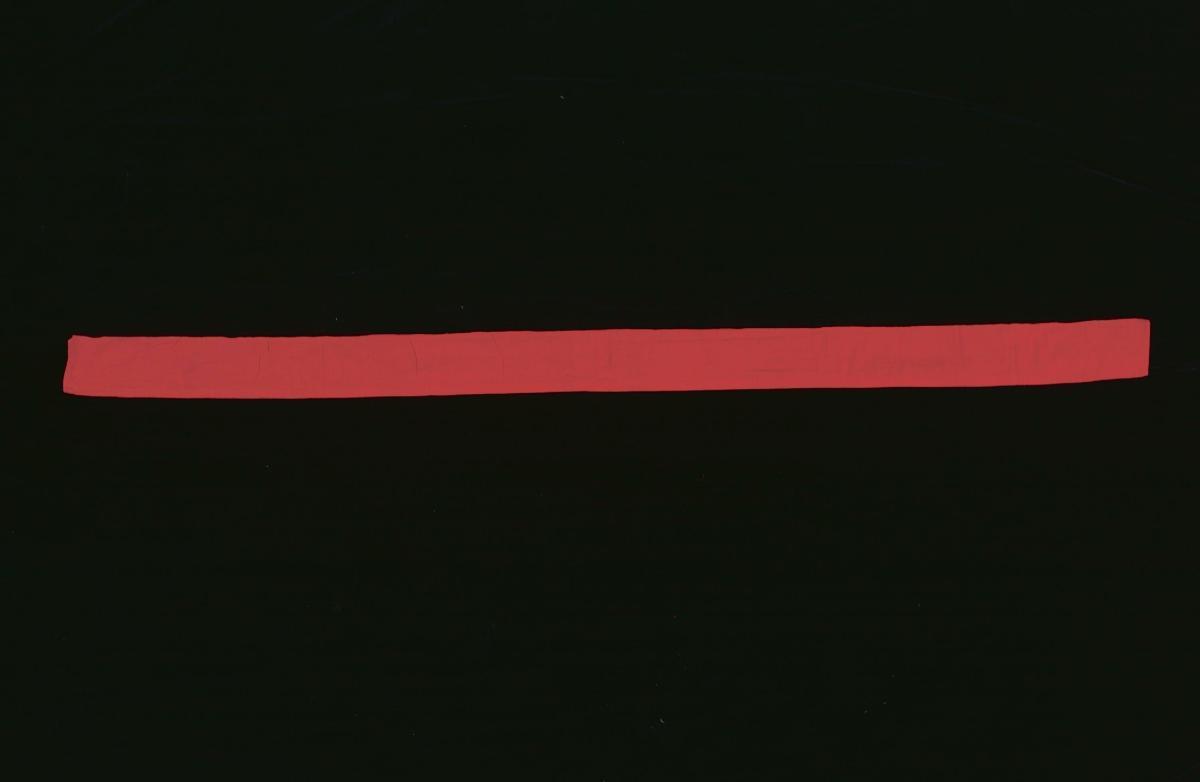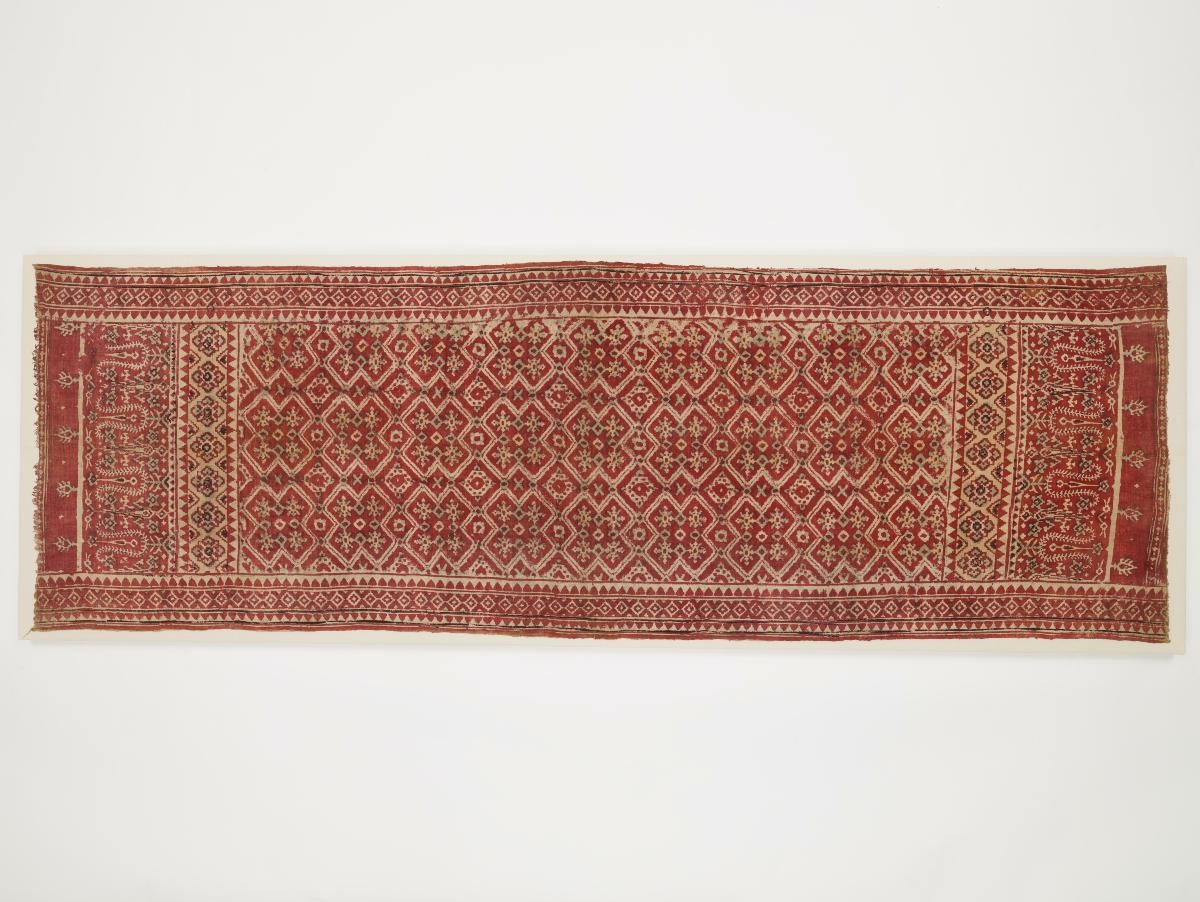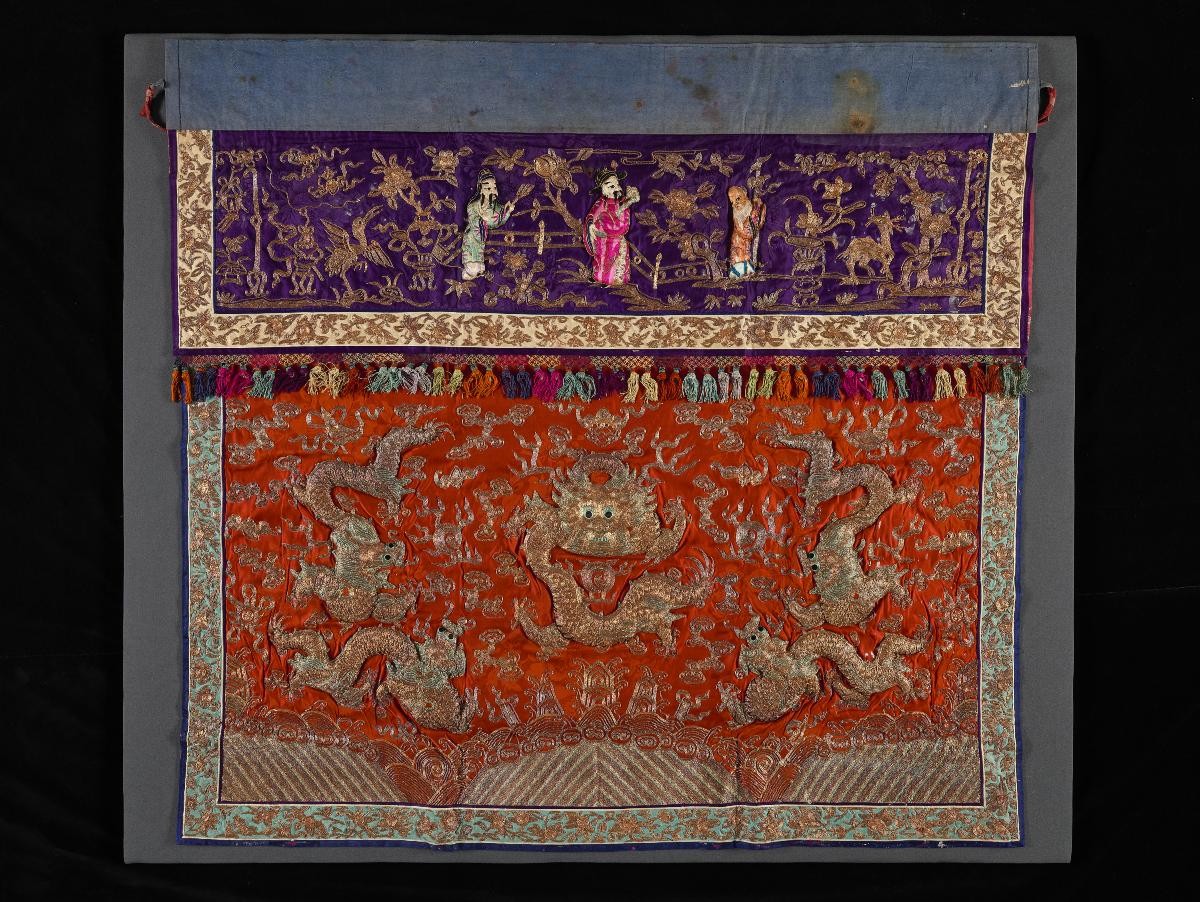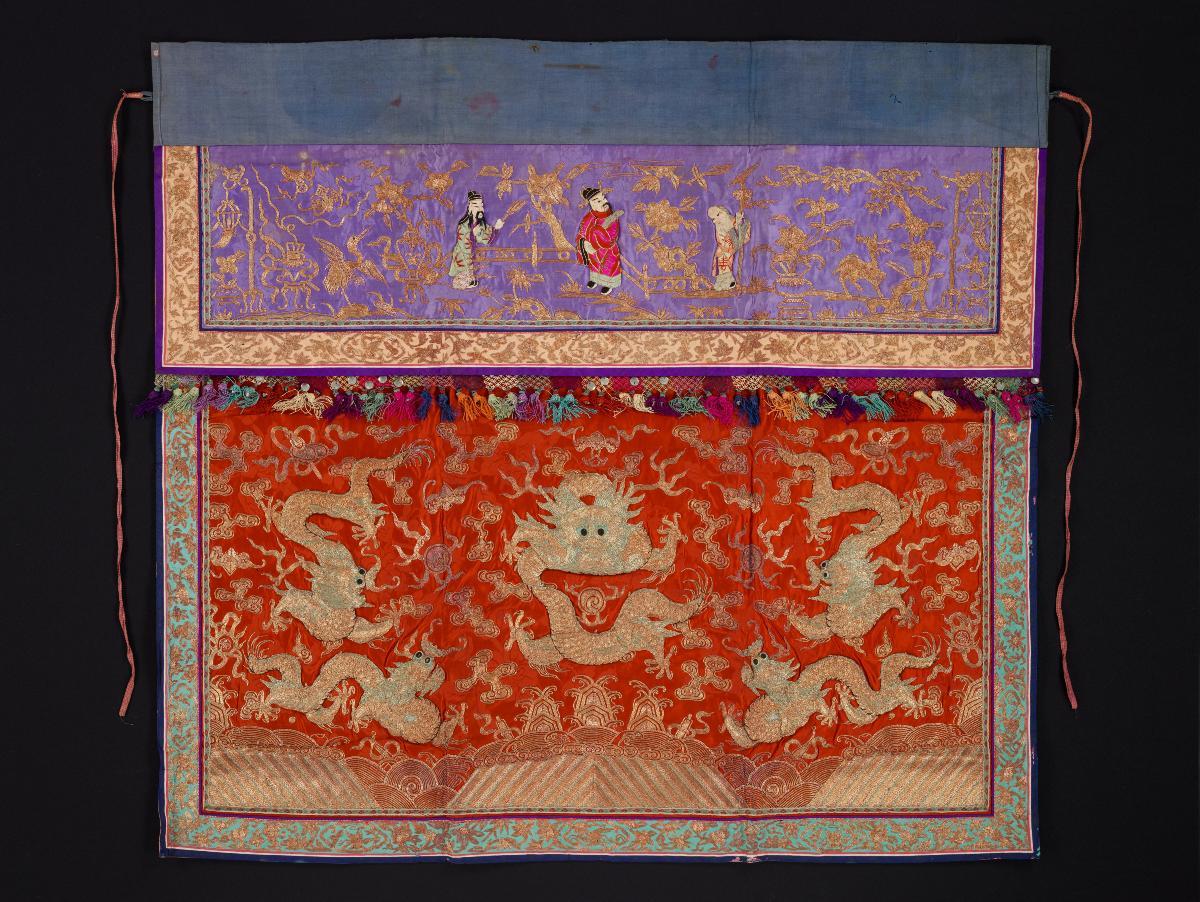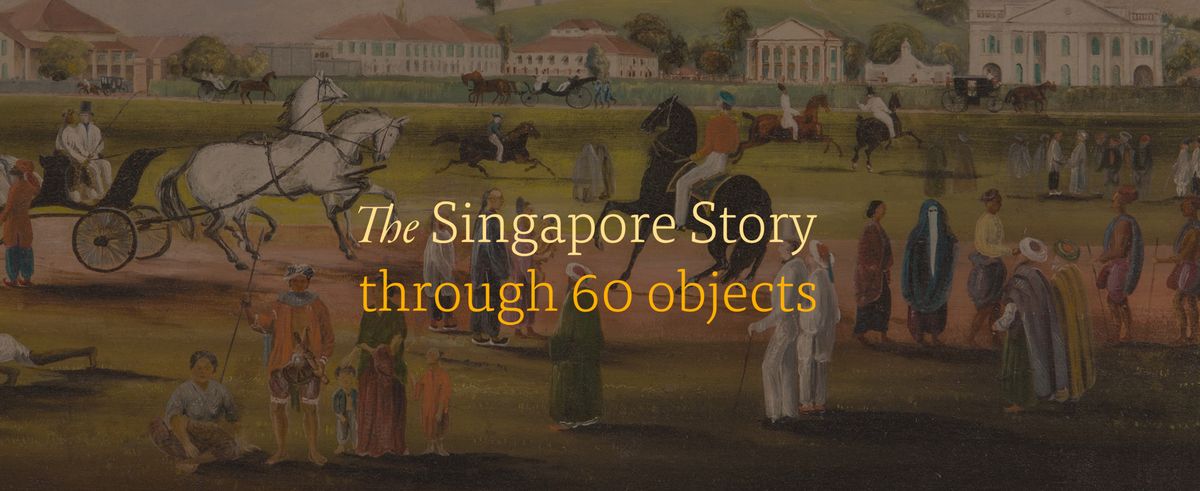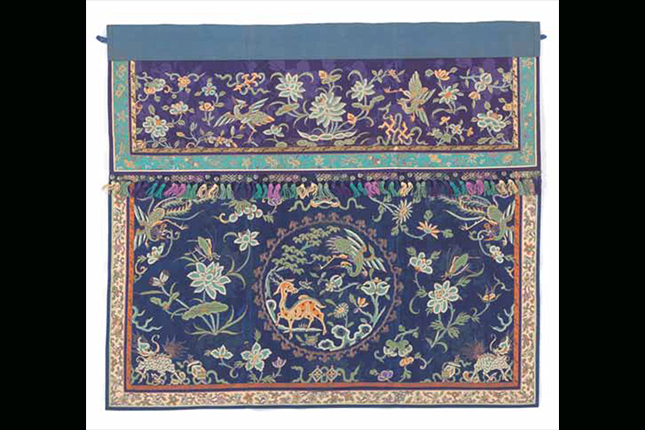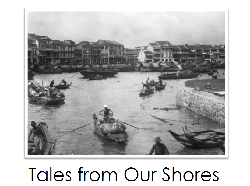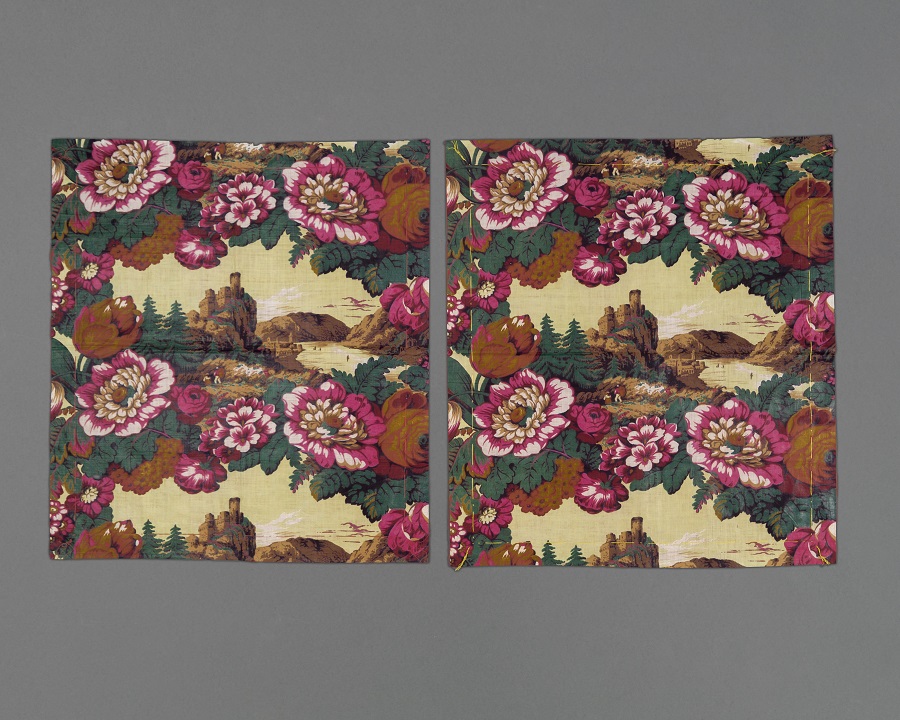This buff-based, plain cloth is thought to be made by the Kelabits from interior Borneo (Pa Bawang) from cords of parachutes dropped by British forces in 1945. It is patterned with three thin vertical bands of dark and light brown, and white stripes. Tassels at the lateral ends have been joined together to form a tubular skirt-like garment. As cloth was unavailable during the Japanese Occupation, the Kelabit people threaded together cords and respun them to weave on their own primitive looms. During World War II, Tom Harnett Harrisson (1911–1976), a British polymath, was the first man to parachute into the interior of Borneo’s jungle to gather information on Japanese troops for the British and American military. The Kelabit initially thought the parachuting agents were gods or spirits descending from the sky, but soon dismissed the idea after getting to know Harrisson and his team. These agents lived among the Kelabit to carry out their covert mission. The reason for weaving parachutes into textiles remains unknown. It has been suggested that during the war, agents covered their tracks by destroying their parachutes. As cotton and other natural materials were in limited supply, local communities might have re-cycled the fabric as it was too valuable to be wasted.




